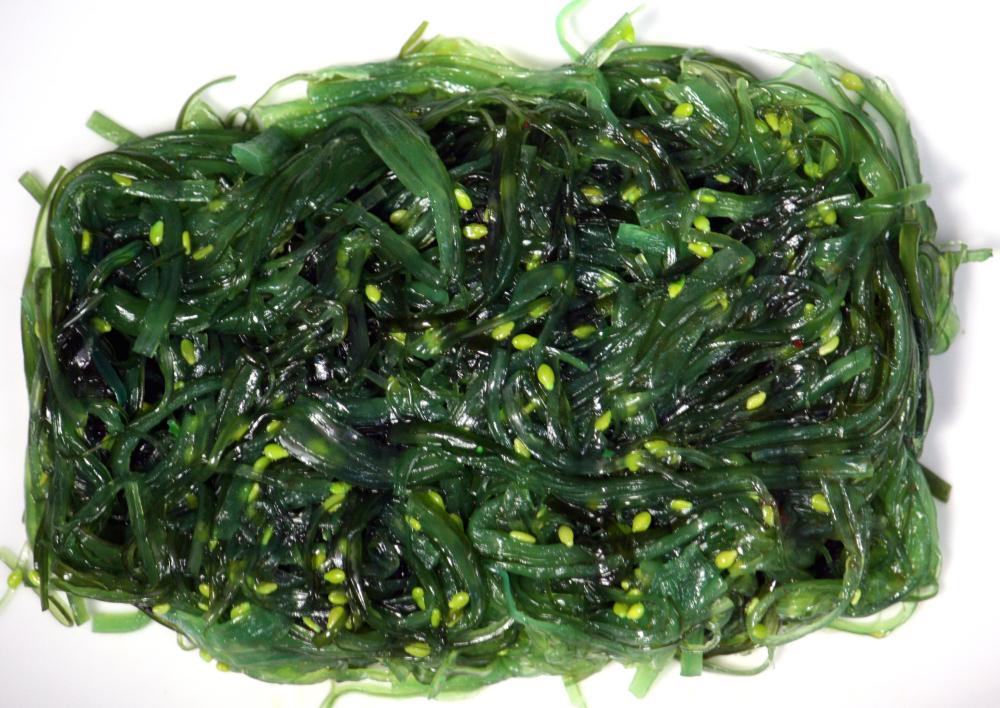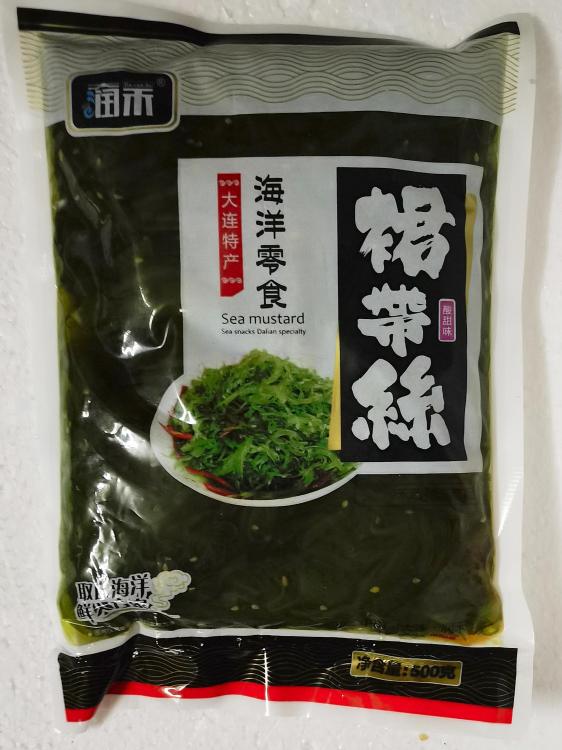One of the most widely available and eaten seaweeds is Undaria pinnatifida or 裙带菜 (qún dài cài) in Chinese and わかめ (wakame) in Japanese. Sometimes known as sea mustard in English.
It is a type of large brown kelp, native to the western Pacific coast adjacent to Russia, China, Japan and Korea but has also become an invasive species In North America, Europe, Argentina, New Zealand and Australia.
Of the 30 or so existing varieties of kelp this is the most consumed.
Its fronds grow to about 1 metre / 40 inches long and 36 cm (15″) wide. The leaves are typically cut into strips for sale. Although it is mainly the leaves which are eaten, the stem is also edible and has a chewy, crunchy texture.
Fresh Wakame
Around the world, it is mostly sold dried or salt -preserved, but in Spring it is available fresh in China and Japan. The salted variety needs carefully rinses to remove as much salt as possible. The dried variety should be soaked for between 5 and 19 minutes to rehydrate. Wakame should not be cooked for more than one minute or it loses its nutritional value.
Dried Wakame
Wakame is added to miso soups and to しゃぶ しゃぶ (shabu-shabu), Japanese hotpot. In the west it is most often served as a salad with sesame seeds - ごま わかめ (goma wakame, meaning sesame wakame) or 冷やし わかめ (hiyashi wakame, chilled wakame) in Japanese.
Wakame Salad







